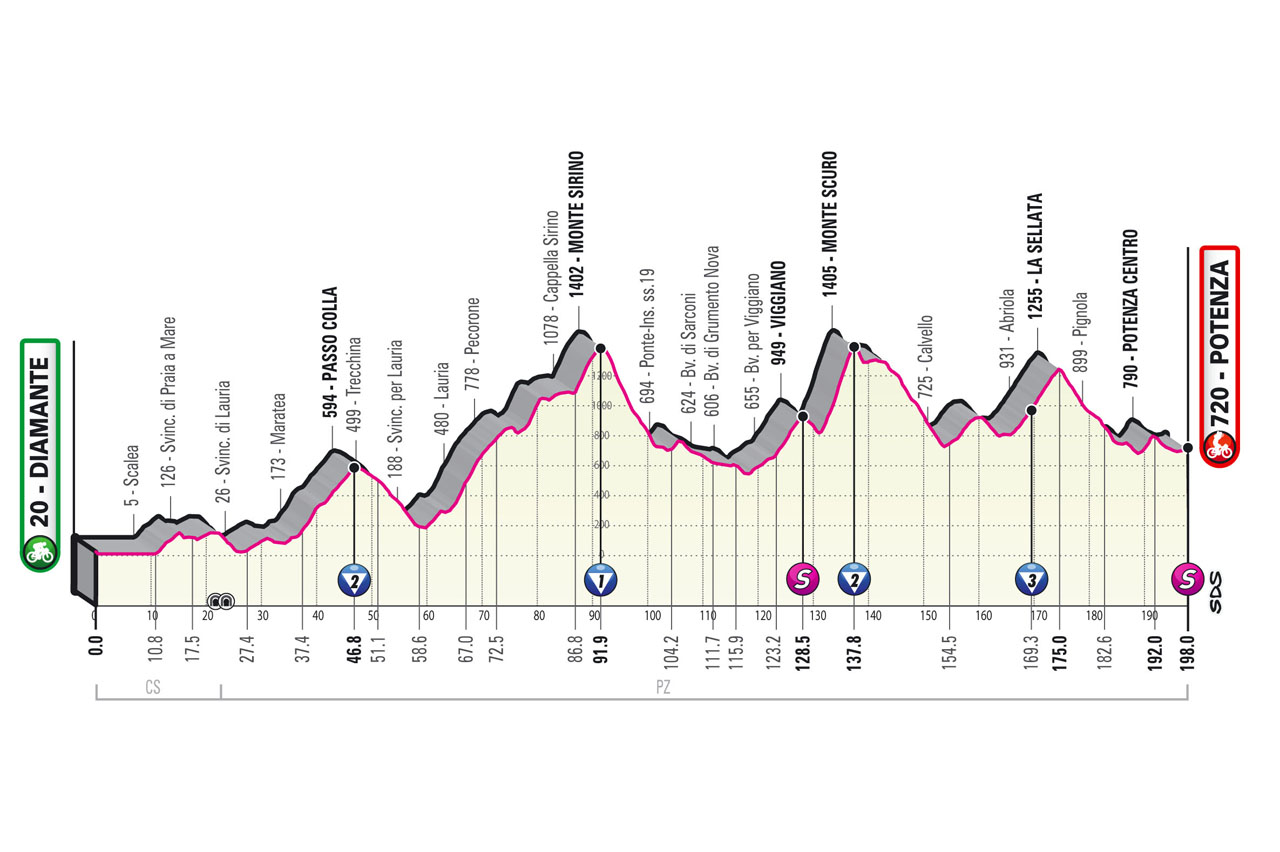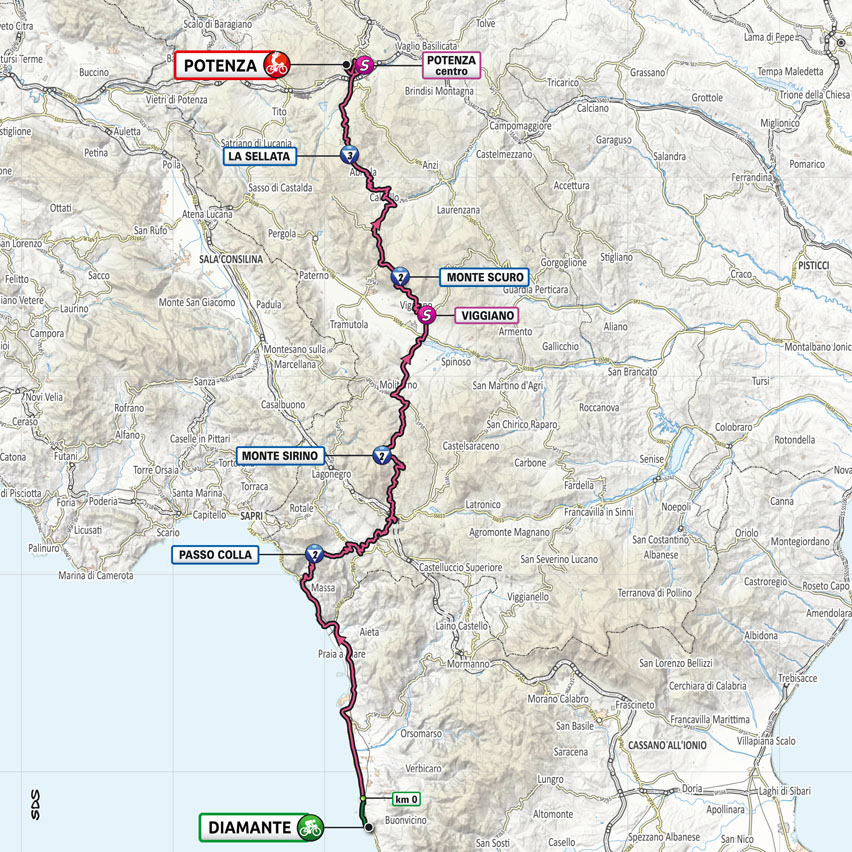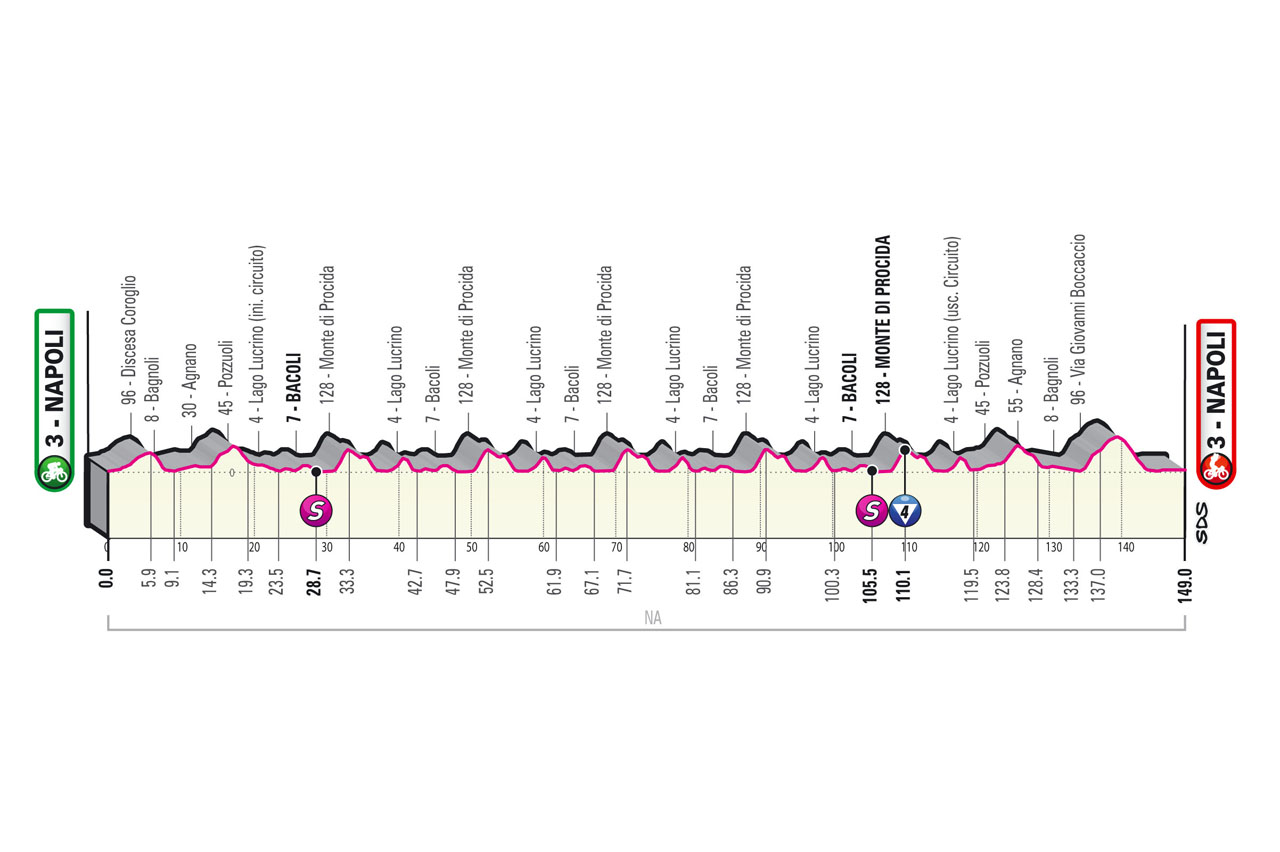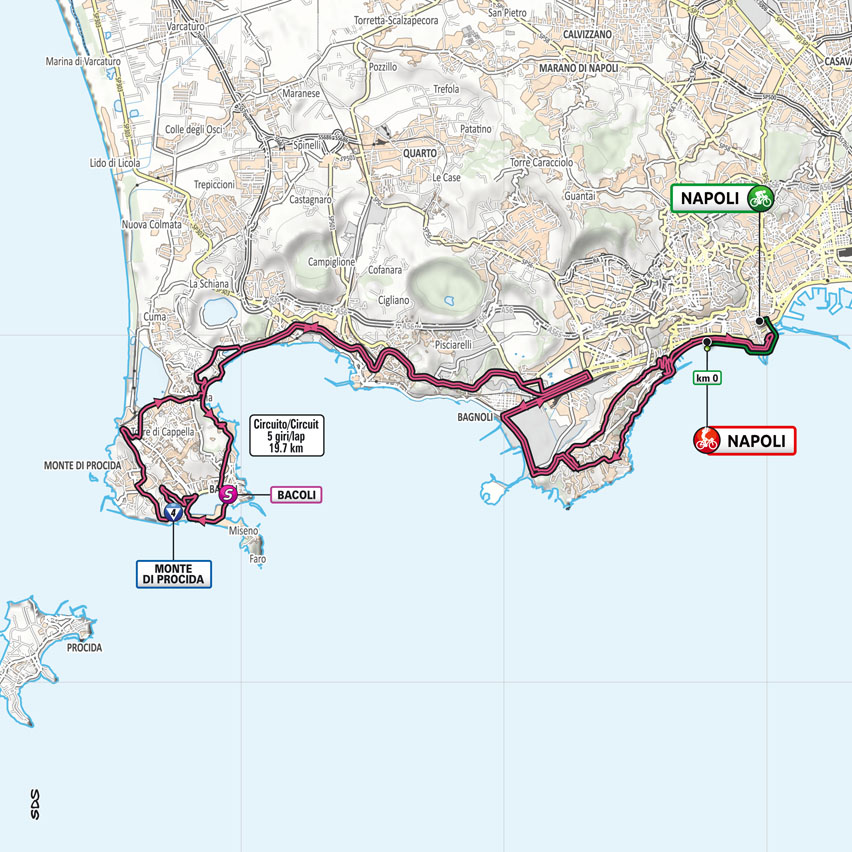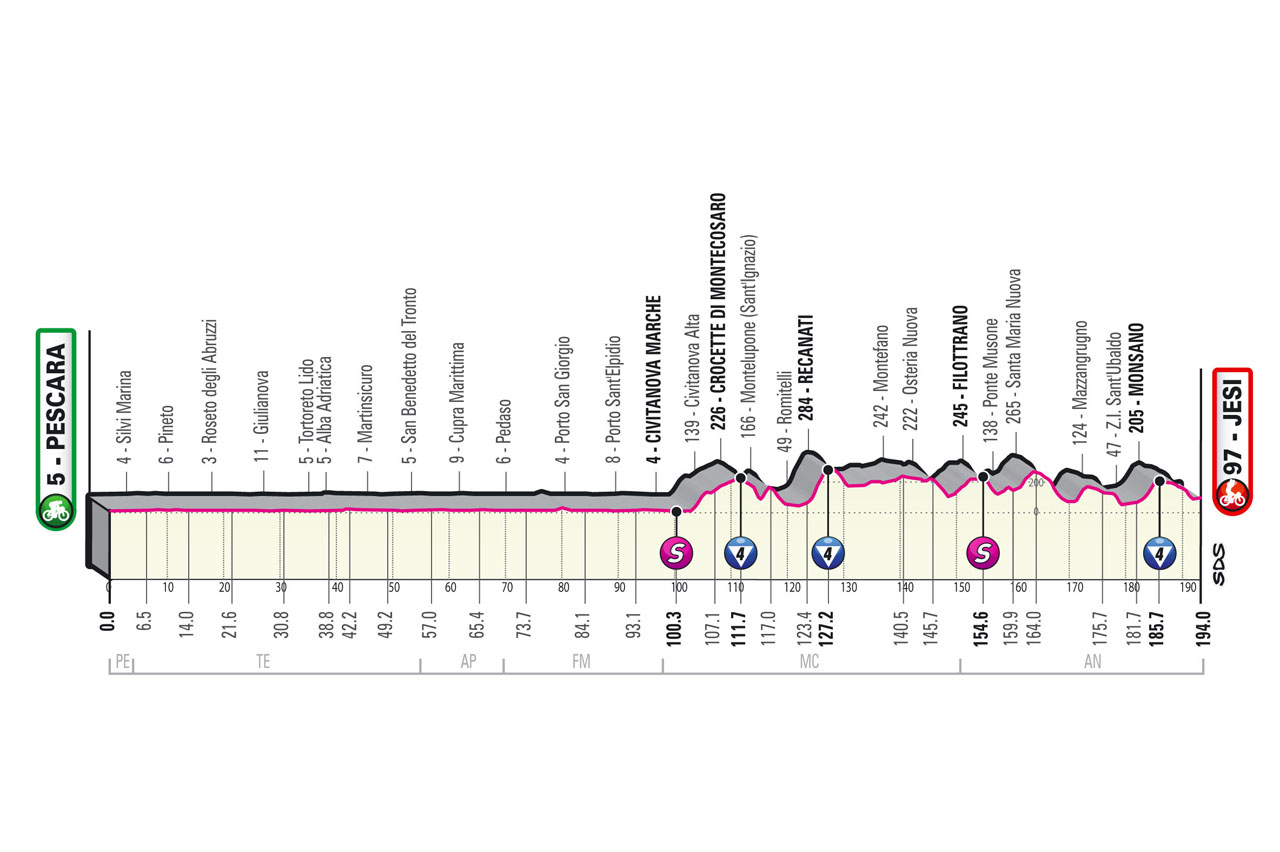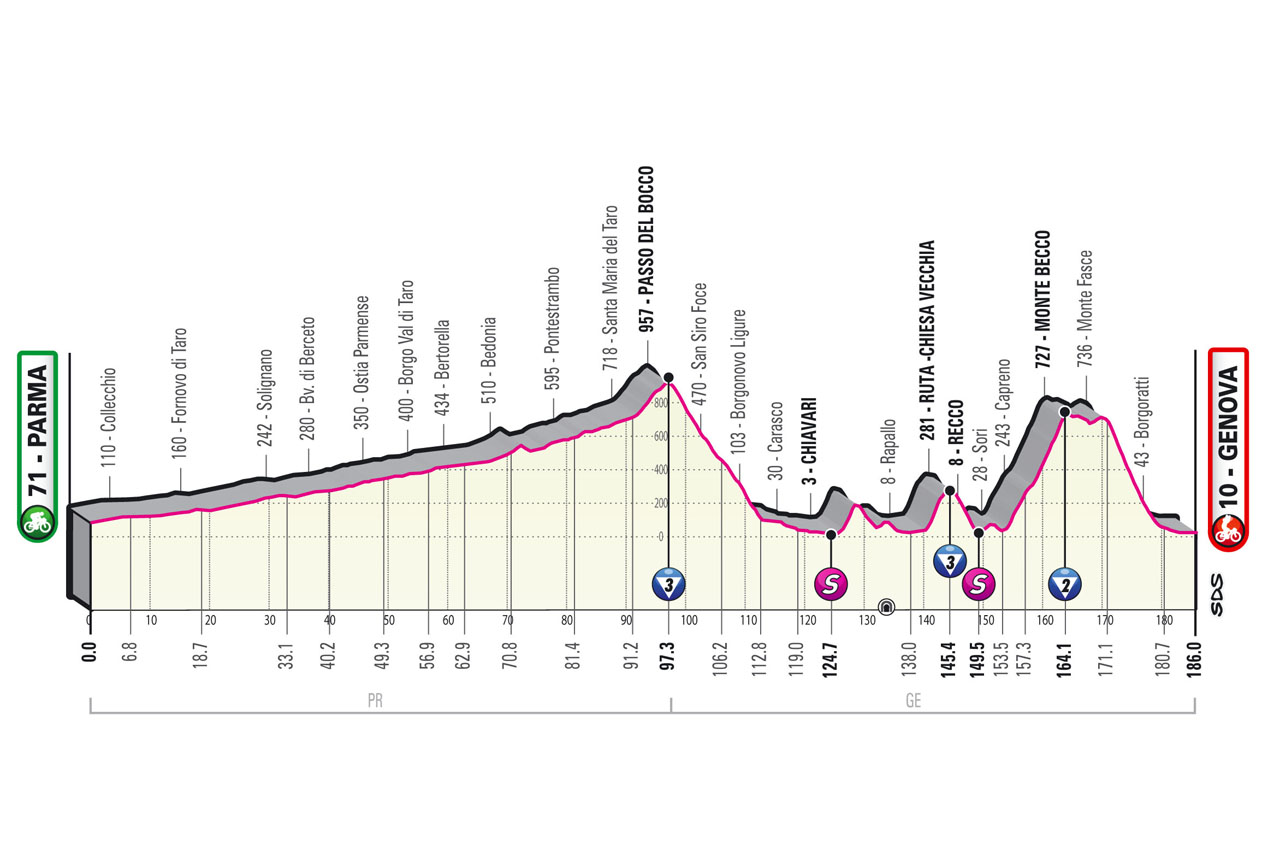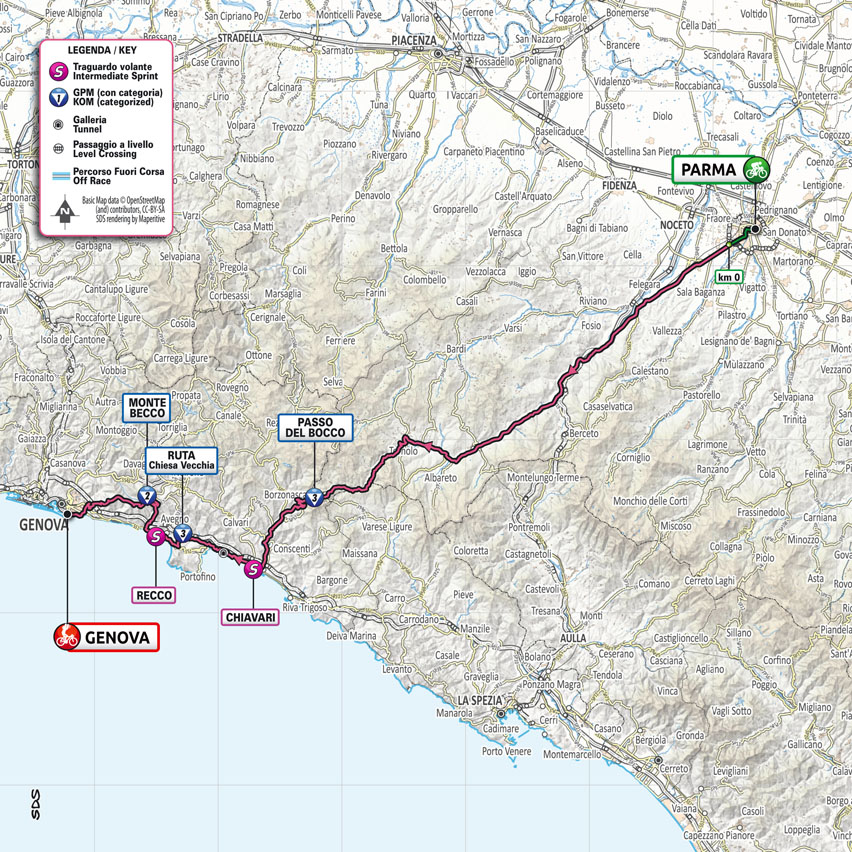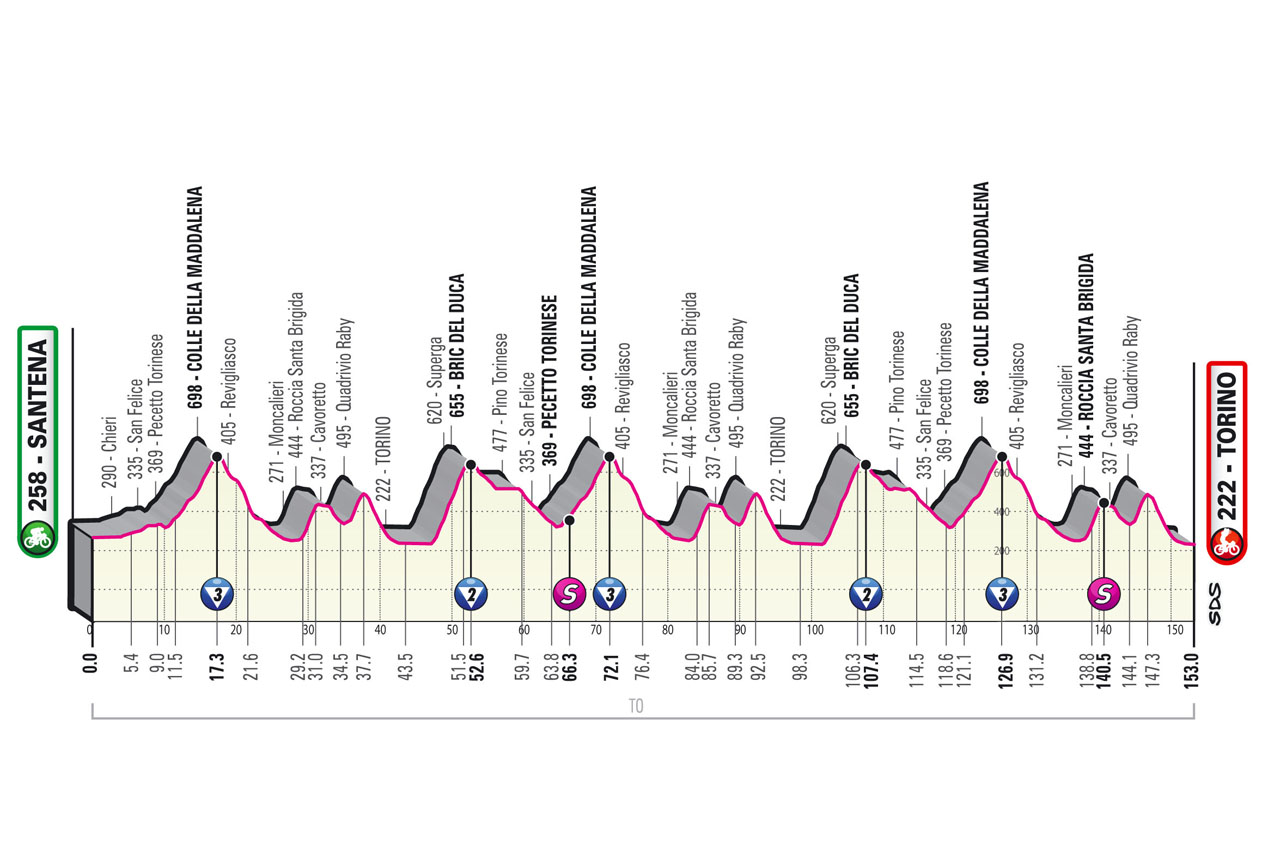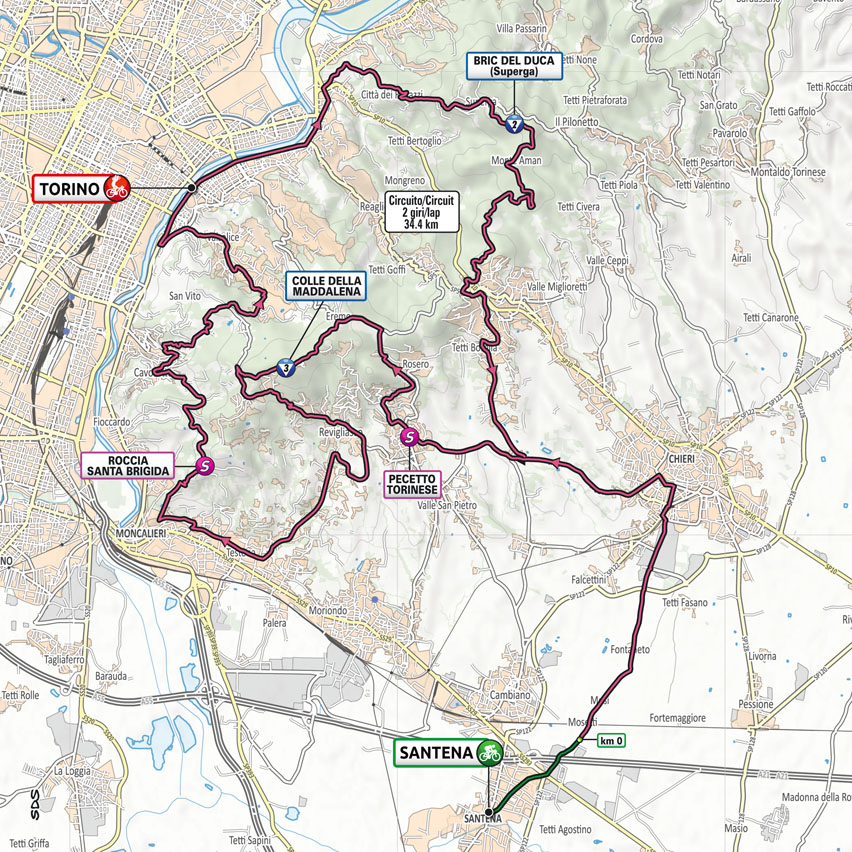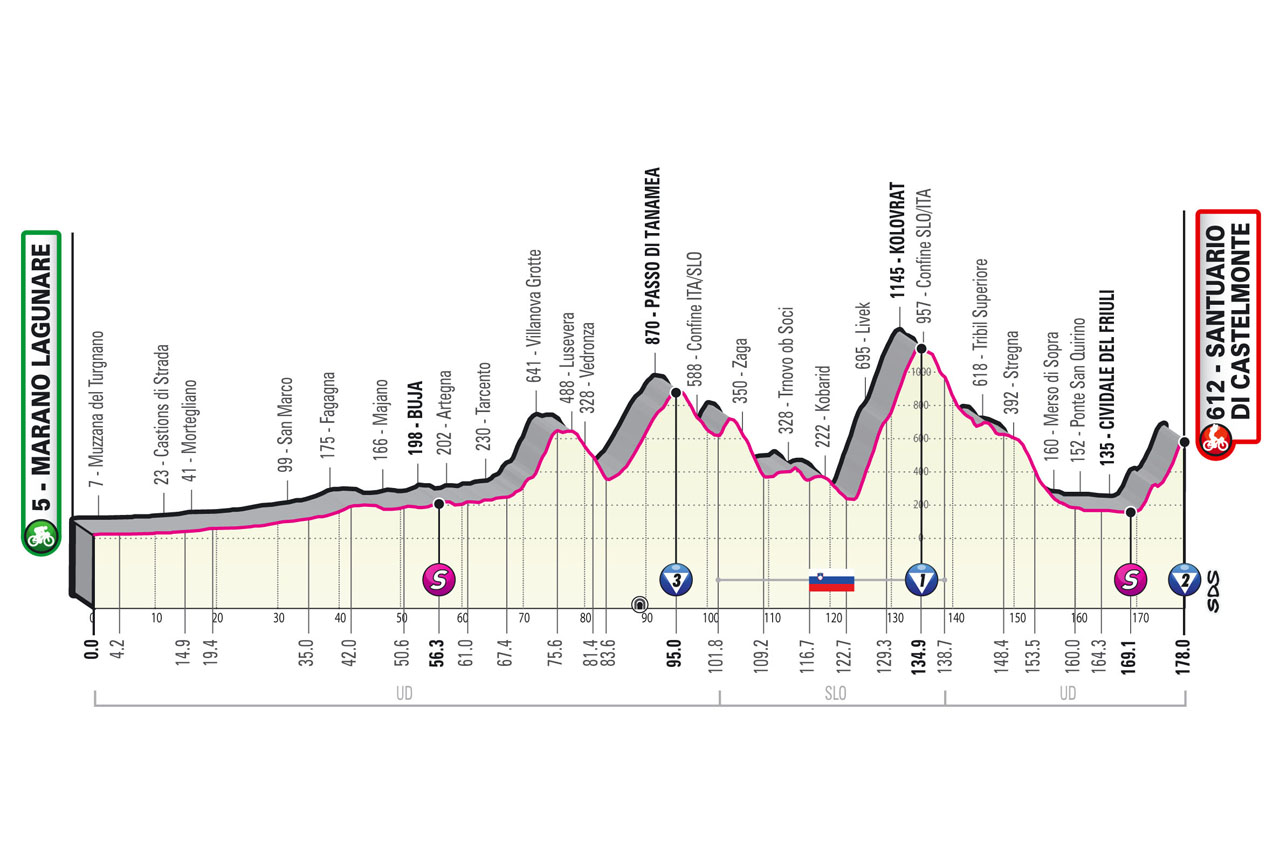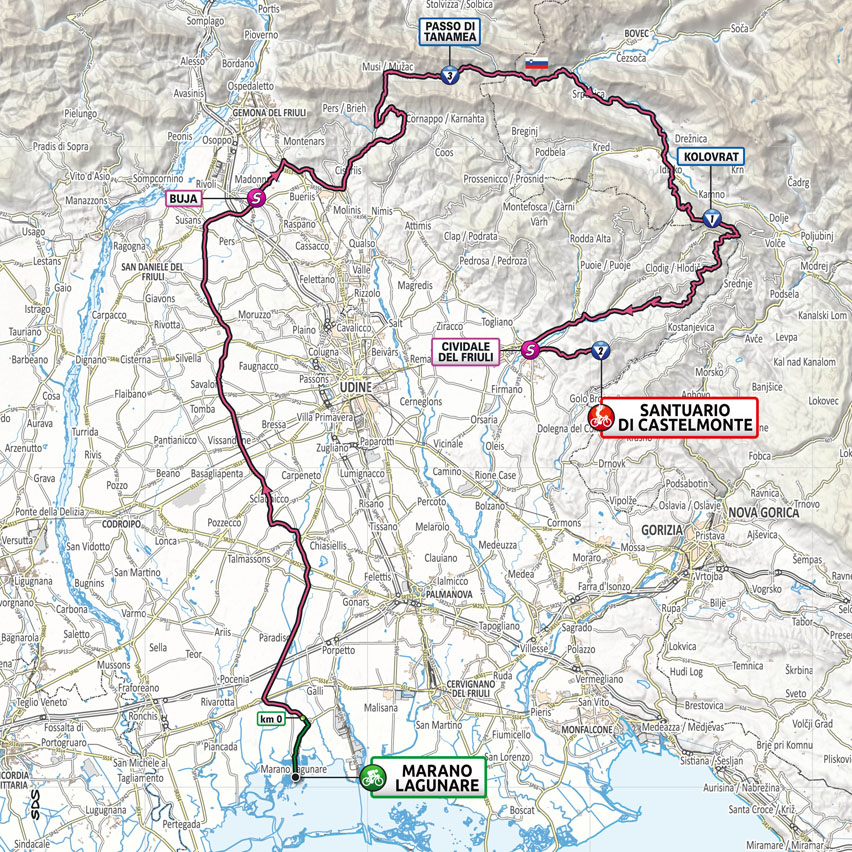DIAMANTE - POTENZA
198 km – vertical elevation 4,490 m
The stage has a challenging hilly profile across the mountains of Calabria and Basilicata, with a total amount of climbing that is worthy of a stage through the Dolomites. The start along the sea is the only flat stretch. Past Maratea, the route undulates continuously, with milder or harsher gradients. After climbing the Passo della Colla and reaching Lauria, the stage course tackles an ‘old friend’ of the Giro, Monte Sirino, after 23 years. Past Viggiano, the route clears the challenging Montagna Grande di Viggiano (a first‑ever pass), and then takes in the final ascent of Sellata before reaching Potenza.
NAPOLI - NAPOLI (Procida Capitale Italiana della Cultura)
149 km – vertical elevation 2,130 m
A short yet demanding stage across the regional capital and the Phlegraean peninsula. Starting in Naples, the route reaches Bacoli where it takes in a challenging circuit of approx. 19 km from Bacoli to Monte di Procida, to be covered five times. At the end of the last lap, the route goes back to Naples, where the closing sprint along the Via Caracciolo seafront will likely be contended by a slender peloton.
PESCARA - JESI
194 km – vertical elevation 1,730 m
The stage course begins flat, following the coast, and then undulates continuously, climbing the ‘walls’ around Jesi, with no pause for breath past Civitanova Marche. The route takes in challenging climbs up to Civitanova Alta, Sant’Ignazio di Montelupone, Recanati, Filottrano, Santa Maria Nova and Monsano, with very steep stretches, which will take a slender peloton to the closing sprint in Jesi.
PARMA - GENOVA
186 km – vertical elevation 2,840 m
A medium mountain stage where breakaways are likely to happen. The route rises steadily at first, entering Liguria through the Passo del Bocco, and then descends rapidly towards Chiavari. Gradients begin to go up again, as the stage reaches the coast, climbing up to Ruta (coming from Chiesa Vecchia). The route then takes an unprecedented, challenging ascent to Monte Becco, followed by another climb up to Monte Fasce, which are likely to whittle down the peloton before the finish in Genoa.
SANTENA - TORINO
153 km – vertical elevation 3,470 m
A short and challenging stage, with no pause for breath. The overall elevation gain, when compared to the stage length, is worthy of an Alpine stage. The first 10 kilometres, running flat from Santena to Chieri, are the only ones with no climbs or descents. The route then takes two and a half laps of a circuit that ascends to Colle della Maddalena, descends into Moncalieri and takes a punchy climb up to Santa Brigida. After passing over the finish line at the Gran Madre, and taking in the Superga ascent, the route goes back to the foot of the Colle della Maddalena to begin again. Overall, the peloton will take a double pass over the Superga hill, and three ascents of the Maddalena and Santa Brigida, for a challenging, punchy finale.
MARANO LAGUNARE - SANTUARIO DI CASTELMONTE
178 km – vertical elevation 3,230 m
A challenging medium mountain stage, crossing over to Slovenia and closing with a summit finish. Starting in Marano Lagunare, the route cuts across the lowlands all the way to the morainic hills around Fagagna and Majano. The stage course crosses Buja, reaches the Julian Prealps, runs past the Grotte di Villanova and tackles the Passo di Tanamea. The route enters Slovenia through the Uccea pass, leading directly to Kobarid (Caporetto, in Italian). Here, the peloton will take a first‑ever pass over Mt. Kolovrat, ascending at nearly 10% for 10 km (with gradients easing off owing to a short plateau halfway up the climb). A long false-flat down then leads back to Italy. Starting in Cividale del Friuli, the peloton will tackle the closing climb to the majestic Castelmonte sanctuary, which has been an iconic hallmark for nearly 1,000 years.






















